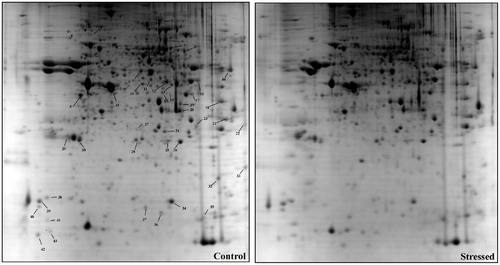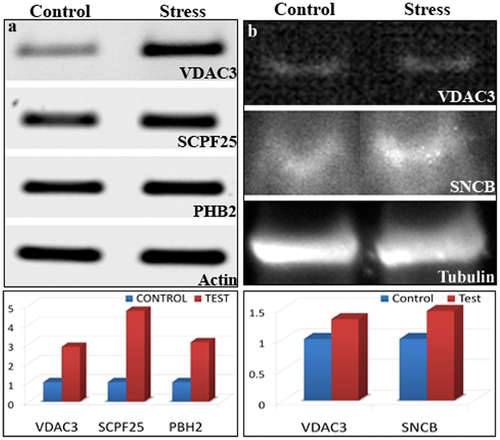- Title
-
Chronic Unpredictable Stress (CUS)-Induced Anxiety and Related Mood Disorders in a Zebrafish Model: Altered Brain Proteome Profile Implicates Mitochondrial Dysfunction
- Authors
- Chakravarty, S., Reddy, B.R., Sudhakar, S.R., Saxena, S., Das, T., Meghah, V., Brahmendra Swamy, C.V., Kumar, A., and Idris, M.M.
- Source
- Full text @ PLoS One
|
CUS in zebrafish mimics established molecular markers of rodent mood disorder models and attenuates adult neurogenesis. Effects of the 15-day chronic unpredictable stress (CUS) protocol on the levels of CRF, ppp3r1a (calcineurin) and BDNF, which are known molecular markers in rodent mood disorder models. There is significant upregulation in the transcript level of these genes in stressed group, compared to control (a & b). Neurogenesis in the optic tectum (highly proliferating neurogenic niche) of the zebrafish brain (c, d & e) is adversely affected after CUS, as BrdU positive cells are rarely observed in the stressed sample. |
|
Two-dimensional gel electrophoresis of zebrafish brain shows differential protein levels in response to CUS. Two-dimensional gel electrophoresis pattern of zebrafish brain (a, control and b, stress group) visualized with fast Coomassie staining. Proteins were separated according to the pI gradient (x-axis) in the first dimension and the molecular weight in the second dimension (y-axis). Eighteen spots (labeled in control gel) were identified as differentially regulated under CUS and analyzed by tandem mass spectrometry (MS/MS). |
|
Validation of proteomic results through immunoblotting and gene expressions for a subset of corresponding proteins. CUS upregulates VDAC3, PHB2 and SLC25A5 gene expression levels, as indicated by the fold changes at the mRNA level (a). Similarly, we validated the stress regulation of VDAC3 & SNCB (2 identified proteins from the proteomic list), as observed in the immunoblot result (b). |
|
CUS affects neurogenesis negatively in adult zebrafish. Neurogenesis in the telencephalon, which corresponds to the hippocampal neurogenic region in rodents, is moderately affected after CUS; the number of BrdU positive cells is reduced in stressed brain sections (b) compared to the non-stressed control (a). |




